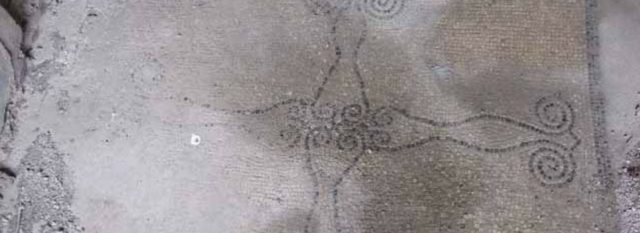
In case you weren’t paying close attention, 2015 was a bad year for an old thesis.
You may have heard or read the claim that Christians in the first three centuries of the church didn’t use the cross in their art or worship—that it was a brutal symbol of persecution, and that they focused instead on images having to do with life and the resurrection. The first image of Christ crucified, it is said, is graffiti of a crucified man with the head of a donkey—a mockery of the Christian faith. All of this throws suspicion upon the way that the cross has been used, thought of, and venerated throughout the 17 or so centuries since that time. Aren’t we overdoing it? Isn’t there some dreadful mistake? Shouldn’t we discard thinking about this ancient tool of violent political oppression (the cross), and focus on the resurrection instead?
Such a line of thought makes sense, if it weren’t for some old books, and a volcano.
Let’s start with the volcano.
As is well known, Mt. Vesuvius buried the city of Pompeii in 79AD, essentially entombing the city until archaeologists began exploring it. What is less known, is that Pompeii contains over 20 different artifacts in which the cross is employed in a manner consonant with traditional patterns of worship, suggesting that our old thesis may not be so valid as is commonly thought. Bruce Longenecker, in his “The Crosses of Pompeii: Jesus-Devotion in a Vesuvian Town,” works his way through the relevant evidence, looking at inscriptions on walls, jewelry, and engravings on sidewalks, making a strong cumulative case that the Christians of Pompeii used the cross in their worship, using the cross in place of other religious artifacts that non-Christians at the time used.
Longenecker, for example, demonstrated that cross were chiseled into the paving stones throughout the city at key points, to protect the city and stores owned by Christians, from the “invasive forces of evil” (224), precisely after the pattern of other deities with which non-Christians would adorn their shops and streets. In short, when citizens of Pompeii were converted to the Christian faith, they naturally sought to replaced their deities and pagan symbols with Christian alternatives: and in doing so, they turned to the symbol of the cross.
But were the Pompeian Christians simply odd-balls?
At this point the old books become relevant. As Frances Watson shows in the fourth chapter of her “Construin the Cross: Type, Sign, Symbol, Word, Action,” if we look at the preaching and theology of the first three centuries of the church, Christian thinking bound everything to the cross. Justin Martyr, Theodoret, Ambrose, Cyril of Alexandria… the early theologians wove together Christian imagery and the cross in a consistent and flexible way, so that what may appear to be an absence of thinking about the cross, in fact proves to be the opposite: the cross is everywhere, if only we have eyes to see. Images of ships, fish, anchors… all these images, within the preaching of the church, were bound up with the cross of Jesus.
So where does that leave us in terms of the history of the portrayal of the cross, and its use in the worship of the church?
It leaves us with a new challenge.
We must learn to think after the pattern of the early theologians and pastors of the church, seeing the role of the cross within other Christian imagery, for this is how they thought. And beyond this, we must learn to see subtler uses of the cross, such as we find in Pompeii, where the cross is used to replace deities and other symbols that non-Christians would have used in the course of the worship, and religion-saturated lives.
The old thesis, it seems, has fallen on hard times. Emphasizing the cross is not a later accretion, a corruption in the history of the church—it was there all along, if only we have eyes to see. And fortunately, we have a volcano and some old books to thank in this regard (and the authors, Longenecker and Young, who have brought them to our attention).